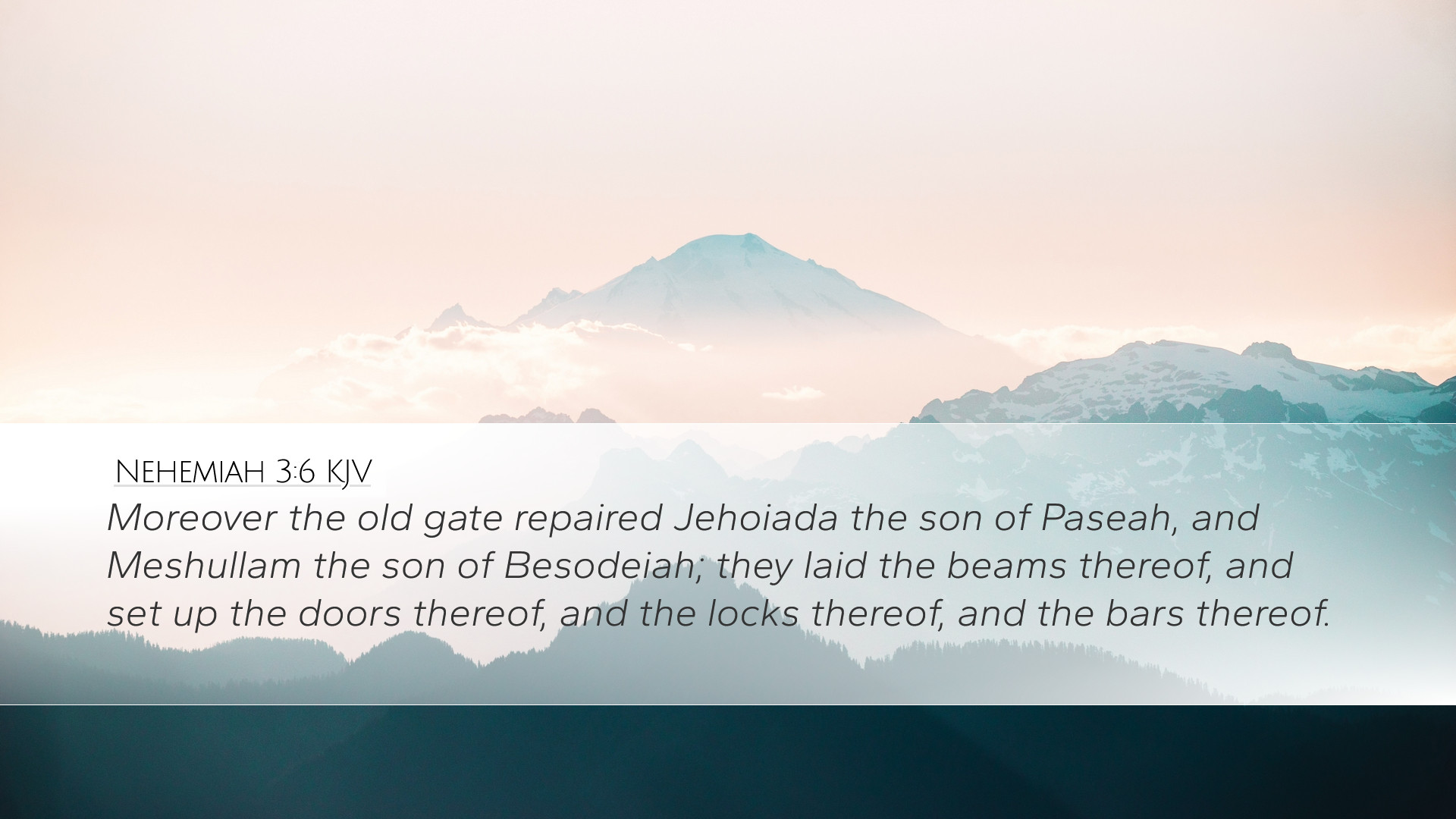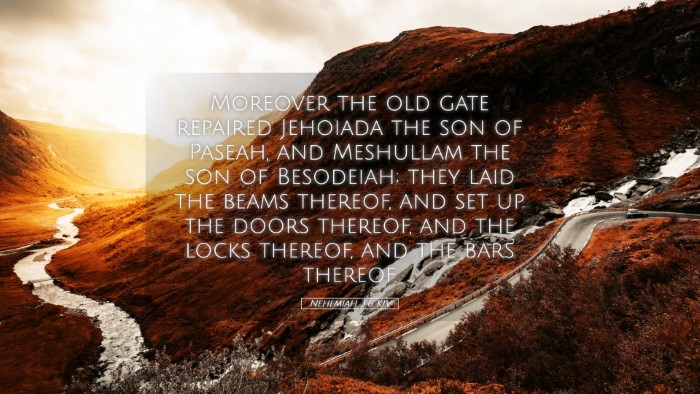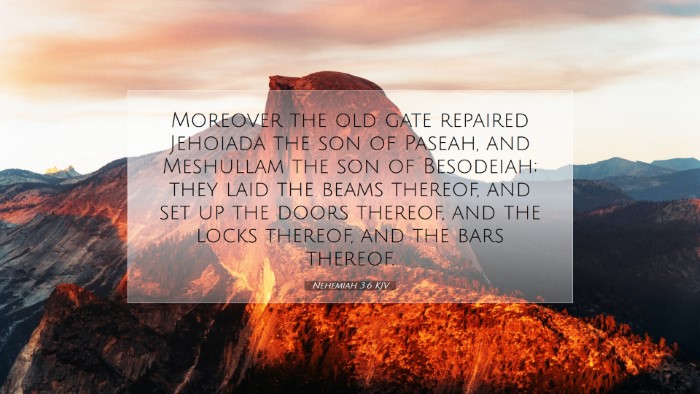Commentary on Nehemiah 3:6
Nehemiah 3:6 states:
"Moreover the old gate repaired Jehoiada the son of Paseah, and Meshullam the son of Besodeiah. They laid the beams thereof, and set up the doors thereof, the locks thereof, and the bars thereof."
This verse appears in the context of the rebuilding of the walls of Jerusalem, a significant event not only in the history of Israel but also in the spiritual revival of the Jewish people after their return from Babylonian exile. The mention of specific individuals in the repair of the Old Gate serves to highlight both their roles in the reconstruction process and the communal effort that characterized this endeavor.
Historical Background
During the time of Nehemiah, the Jewish people faced numerous challenges, including opposition from neighboring communities and the need to restore their identity as a nation. The Old Gate (or "Jeshanah" as referred in some texts) was vital due to its historical significance—it was likely the original entry point into the city during earlier times.
Character Study of Jehoiada and Meshullam
- Jehoiada: The son of Paseah, symbolizes the priestly lineage and the importance of spiritual leadership in physical restoration. His involvement signifies the role of the clergy in guiding the community toward both spiritual and physical renewal.
- Meshullam: The son of Besodeiah, represents the general laypersons whose participation is equally vital in God’s work. His readiness to take on responsibility reflects a communal spirit in rebuilding efforts, emphasizing that all members of the community have a part to play.
Significance of the Old Gate
The Old Gate holds theological and historical significance. It serves as a metaphor for aspects of their faith that required restoration. As they repaired the gate, it was not merely a physical structure but a representation of returning to old paths and establishing a firm foundation for their faith.
Spiritual Insights
The act of repairing the gates and walls of Jerusalem can be likened to the spiritual rebuilding that each believer is called to pursue in their lives. There are several critical insights drawn from this verse:
- Restoration of Fellowship: Just as the Old Gate was restored, there is a call for believers to seek to repair their relationships with God and with one another. This involves addressing past grievances and building a community grounded in love and service.
- Security and Identity: Gates serve as points of entry and security for a city. Similarly, believers find security in their identity in Christ, as they navigate the world. The careful restoration of gates indicates the need for each believer to be mindful of their spiritual defenses and identity in Christ.
- Collective Responsibility: The collaborative nature of the rebuilding shows that every believer is part of the body of Christ and has a role to play in encouraging and uplifting one another in faith.
- Commitment to God’s Mission: The work of rebuilding was not merely a task; it was an act of obedience to God's call. Pastors and leaders today should encourage the same dedication among their congregations, fostering a culture of service and devotion.
Theological Themes
The repairs to the Old Gate also allude to broader theological themes:
- Covenant Faithfulness: The rebuilding efforts correspond to the covenant promises God had made to His people. Just as the walls and gates were being restored, God’s faithfulness in re-establishing His people and their identity is manifest.
- Hope and Renewal: The response of the community to Nehemiah's call symbolizes hope. They recognized that despite past failures and exiles, the time had come for restoration and renewal.
Conclusion
Nehemiah 3:6 serves not only as a narrative of historical reconstruction but also as a profound theological lesson. It emphasizes that the act of rebuilding is mirrored in the lives of believers today as they seek to restore their faith, relationships, and the church community. The contributions of individuals within the narrative highlight the collective responsibility of the people of God to work towards a common goal—restoration and renewal, both physically and spiritually.
The examples of Jehoiada and Meshullam remind us that everyone has an important role to play, reinforcing that all of God’s people are called to participate actively in His overarching plan of restoration.


